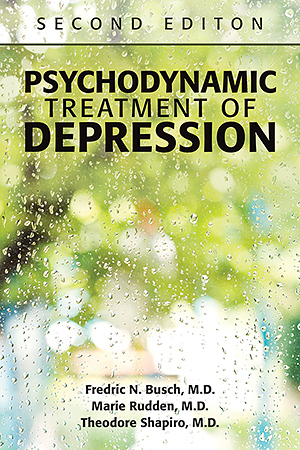Sections
Excerpt
As discussed in Chapter 2 (“Development of a Psychodynamic Model of Depression”), patients prone to depression use a number of defense mechanisms that can be usefully recognized for therapeutic work as habitual ways of protecting themselves from conscious comprehension of warded-off affects and fantasies (Bloch et al. 1993). Although these defenses may temporarily ease painful feelings, in the long term they can worsen depressive symptoms. As described in Chapter 9 (“Idealization and Devaluation”), for example, idealization employed in an effort to bolster self-esteem or protect others from aggression may lead to disappointment and devaluation when self and others cannot meet the inflated expectations. Therefore, it is important to help patients become aware of characteristic defenses and more directly access underlying, threatening fantasies. As long as patients avoid awareness of their anger, for example, it is difficult to help them view anger as less toxic or to help them keep from turning the anger against themselves. Defense mechanisms employed by depressed patients typically include denial, projection, idealization and devaluation, passive aggression, identification with the aggressor, and reaction formation (Table 10–1) (Bloch et al. 1993; Brenner 1975; Jacobson 1971). Idealization and devaluation are discussed separately in Chapter 9.
Access content
To read the fulltext, please use one of the options below to sign in or purchase access.- Personal login
- Institutional Login
- Sign in via OpenAthens
- Register for access
-
Please login/register if you wish to pair your device and check access availability.
Not a subscriber?
PsychiatryOnline subscription options offer access to the DSM-5 library, books, journals, CME, and patient resources. This all-in-one virtual library provides psychiatrists and mental health professionals with key resources for diagnosis, treatment, research, and professional development.
Need more help? PsychiatryOnline Customer Service may be reached by emailing [email protected] or by calling 800-368-5777 (in the U.S.) or 703-907-7322 (outside the U.S.).



